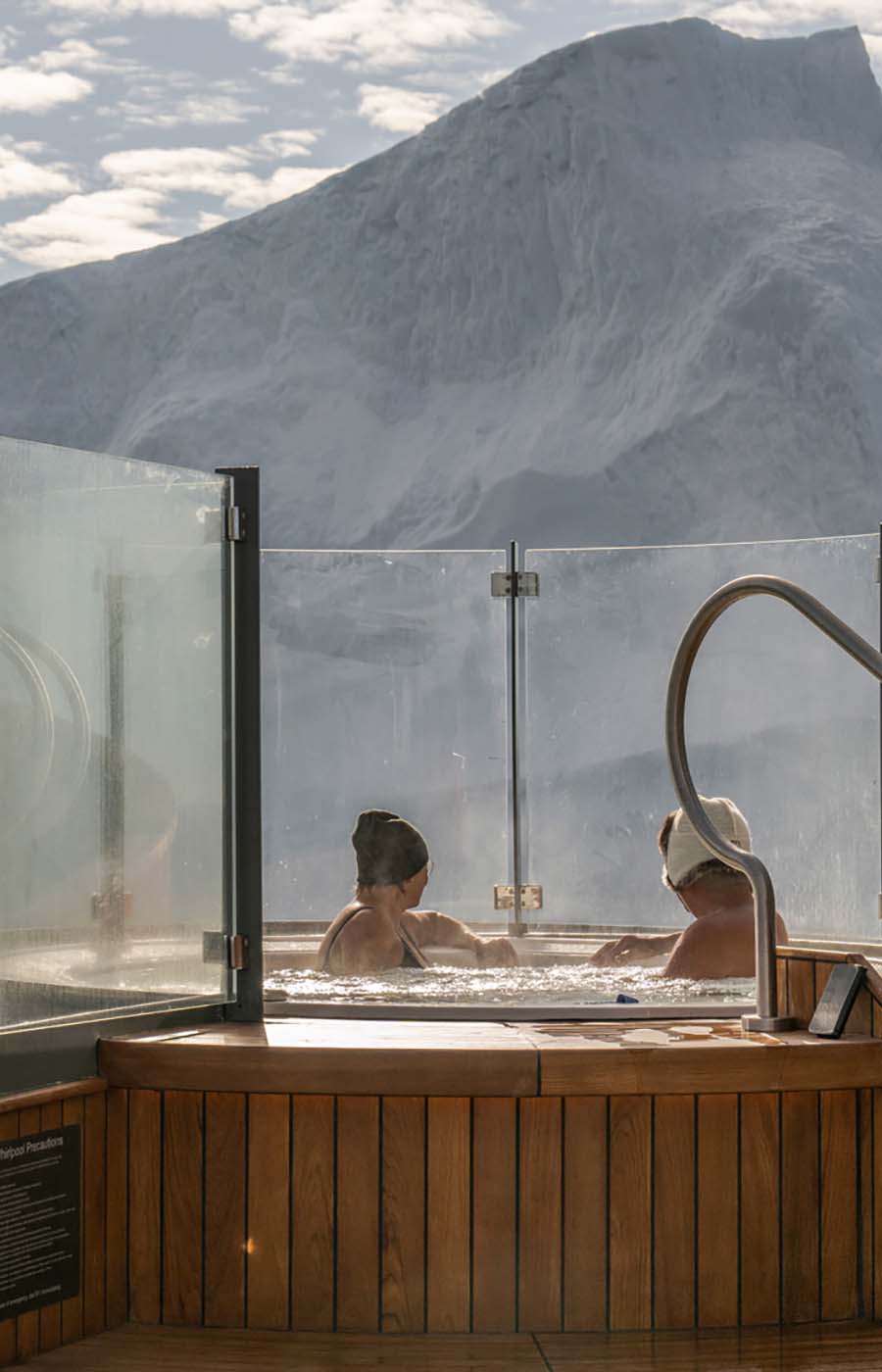Discover the remarkable landscapes and wildlife of Patagonia.
Every landscape tells a story, for those ready to listen. The terrain of Patagonia — the high plains comprising the southern cone of South America, encompassing portions of both Chile and Argentina — tells the story of titanic geologic forces at play in the hidden depths of prehistory. Its dramatic steppes, fjords and basins were sculpted by both glacial ice and volcanic fire.
It’s a romantically lonesome place, with a population density lower than that of any U.S. state except Alaska, and a landscape like nowhere else on earth. Renowned travel writer Bruce Chatwin, whose 1977 book "In Patagonia" is considered a classic of the genre, called it “the far end of the world”— the frontier-edge of earth’s inhabitable regions. Its very remoteness has made Patagonia a destination for utopians and outlaws — and its otherworldly scenery provided a setting for literary geniuses like Edgar Allan Poe and H.P. Lovecraft to weave their tales of imagination. Those might be flights of fancy … but there are wonders to be found in Patagonia’s vastness — mystery, beauty, and prizes both precious and strange.
The geography of the region is quite distinct on either side of the national border that bisects it. The western portion, along Chile’s Pacific coast, arcs from Puerto Montt to the Patagonian ice fields before hooking southeast to Cape Horn. The coastal mountains produce a cool, wet climate, fostering the growth of a rare temperate rainforest. Glacial erosion has fragmented the chain of the Andes into myriad islands. Here, hot springs bubble above the surface, and trout and salmon thrive in rivers running green with rich glacial silt. The retreat of the ice in the late Pleistocene carved the coastline with fjords — spectacular waterways bounded by soaring cliffs. The summits of the island of Esperanza rise a half-mile above the Sarmiento Channel, opening into a blue-water labyrinth cut into the living rock of the mountains, backdropped by snow-topped peaks.
Argentinean Patagonia, by contrast, consists primarily of high desert plains.
This arid region — larger than the Mojave and Sonoran deserts combined — is the flip side of the rainforest just over the mountains. The sheltering Andes create a rain shadow, trapping moisture from the Pacific sea breezes on the Chilean side; and so the lush lowland pampas north of Buenos Aires give way to cold desert. Moving inland from the Argentine coast, the land rises stepwise in a series of steep elevations, 13 in all, each terrace some 100 meters (328 feet) higher than the last. These stony plateaux are nearly barren of plant or animal life. Nothing takes root in the scree, and a ceaseless westerly wind scours the plains. It is only in the foothills of the Andes that grasses and scrub forest can rise.
Yet it was not always so.
Human inhabitants settled Patagonia relatively recently. The first signs of human activity in the region in the archaeological record date back 14,000 years — the end of the last Ice Age. (For context, humans had begun settling Eurasia some 20,000 years previously.) As the continental region most distant from the African savannah where our species originated some 2,000 centuries past, Patagonia is literally the end of the earth, where only the boldest wanderer might venture.
The most remarkable evidence of early human activity can be seen in the Cueva de los Manos, or “Cave of Hands,” in the Pinturas River valley. The cave —21a designated UNESCO World Heritage Site — boasts vivid prehistoric paintings, including scenes of llama-like guanaco being hunted with bolas — the Stone Age weapon of rocks and ropes, still used by modern gauchos — along with geometric patterns and dozens of silhouetted handprints.
Some early indigenous Patagonians continued to wander. The Kawésqar people were nomadic seafarers on the Straits of Magellan, drifting through the archipelagoes in slender 8-meter-long (26-foot-long) canoes — large enough for a family of nine, plus dog — fishing and gathering mussels.
It was the Portuguese explorer Ferdinand Magellan who first called the region “Patagonia.” Believing the natives to be a race of giants, he named the place for the Grand Patagón, a gargantuan character in a chivalric romance. The origins of Magellan’s belief are unclear. The indigenous Tehuelche people of the mainland often topped 6 feet, which might seem oversized to a 16th-century European — but there is no evidence of the 15-foot humanoids described in travelers’ tales. Some modern anthropologists believe that the early European explorers extrapolated the existence of Patagonian giants from the oversized footprints left by the broad-soled boots that the Tehuelche favored. But Patagonia is a land of giants, home to some of the largest living creatures on earth. The best whale-watching spots on the planet are found along her coast; blue whales — the world’s largest animals — frequent the waters around the island of Chiloé in the Gulf of Corcovado. Great flightless rheas, known locally as ñandú, roam the grasslands, sometimes hunted from horseback with bolas. The Alerce Andino National Park, near Puerto Montt on the Reloncaví Sound, is home to a lush forest of cypress, some over 70 meters (230 feet) high and 3,000 years old.
Fossils of many extinct species have been unearthed in the high desert, including Argentinosaurus — the largest dinosaur ever found. Giants of a different kind are found at the La Leona Petrified Forest outside El Calafate; remains of ancient trees, preserved underground by volcanic activity that, over centuries, literally turned their living tissues to stone.
A region so remote and unpopulated is a natural destination for those seeking to get away from civilization — or at least the reach of the law. Notorious outlaws Butch Cassidy and the Sundance Kid fled to Patagonia in 1901 when things got too hot for them in the Wild West; they set up housekeeping in a four-room log cabin on 15,000 acres near the Rio Blanco. Their ranch, recently restored, has become a popular tourist attraction.
Some come to Patagonia to escape oppression. In Argentina’s Chubut Province, Welsh settlers founded Y Wladfa, or “the Colony,” in 1865, as a haven where Welsh speakers could practice their language and culture free from the assimilationist pressures of the English. The towns around Puerto Madryn remain a Welsh-speaking island in a Spanish-speaking country.
Dreamers of another kind have flocked here more recently. Prosperous Patagonian boomtowns blossomed with the discovery of coal and natural gas reserves; today, the renewable energy industry has moved to harness the ceaseless winds.
Related Seabourn itineraries and amenities below
Because of its isolated nature and its proximity to uncharted Antarctica, Patagonia has long inspired authors. After Magellan’s famous voyage, fanciful accounts of his travels (those 15-foot giants!) became popular reading across Europe. Three centuries later, Chatwin’s In Patagonia was credited with revitalizing the art of travel writing. And those perilous sub-polar waters show up, sometimes disguised, in classic works of weird fiction. Edgar Allen Poe’s sole novel, The Narrative of Arthur Gordon Pym (1838), finds its hero sailing ever southward, bound for an encounter with the mystical as he approaches the pole; Herman Melville’s Mardi and a Voyage Thither (1849) recounts a voyage through an allegorical archipelago not unlike Tierra del Fuego, with the author rehearsing the philosophical arguments that would later inform his masterpiece Moby Dick.
Even scientists have not been immune from flights of imagination when it comes
to Patagonia. The region is so geographically distinct from the rest of the continent that wild ideas have arisen as to its origins. One theory — now discredited — held that tectonic shifts caused a peninsula of Antarctica to detach, drift northward and “dock” with the South American mainland
a quarter-billion years ago.
A roundabout way to travel, even to the far end of the world. But given the spectacular views, remarkable wildlife, local color and rich history of Patagonia, maybe it’s not so crazy after all.

